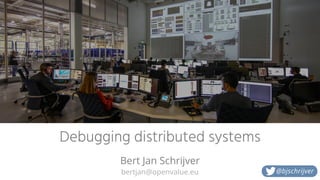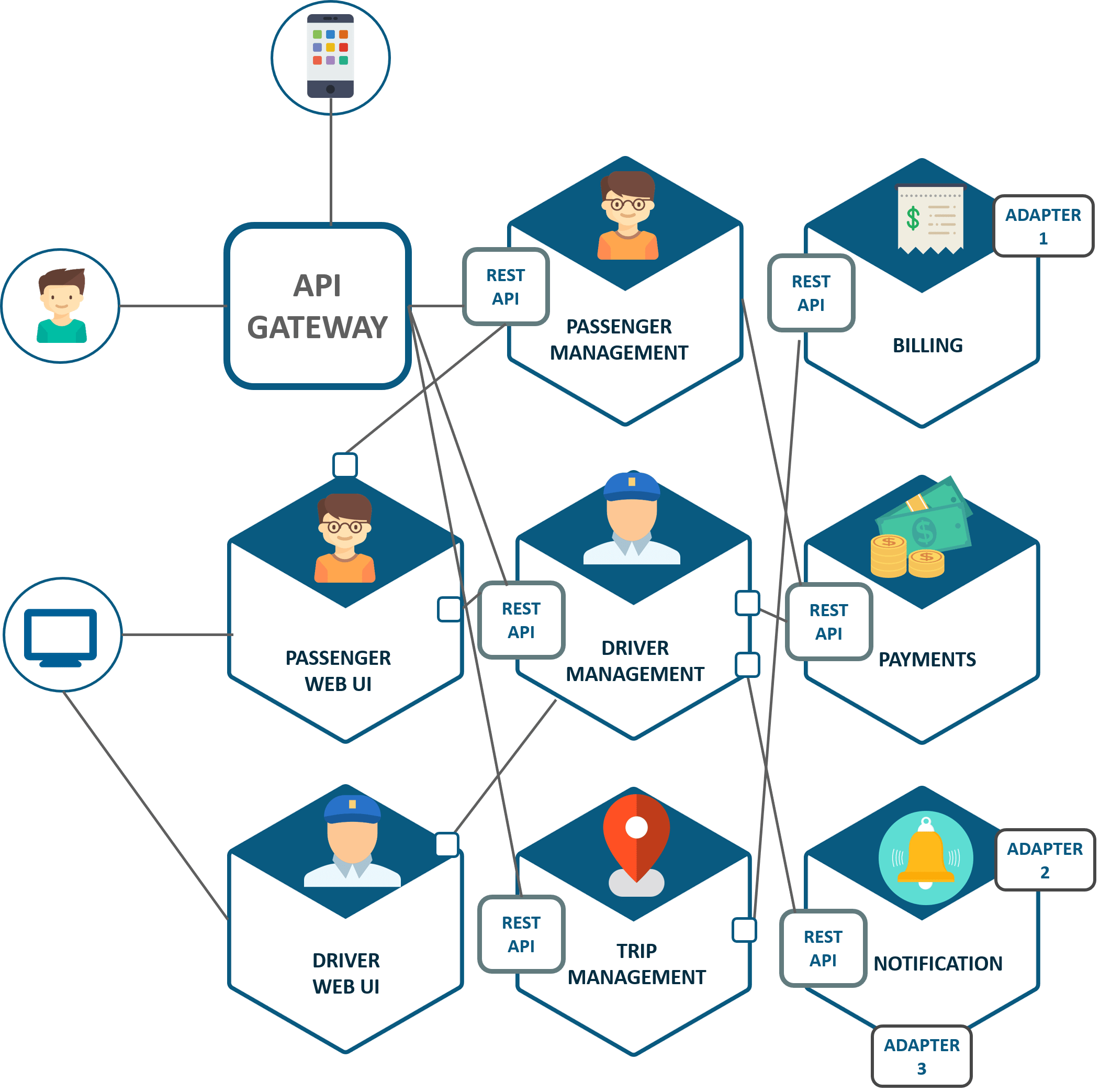Microservices Mishaps: Debugging Distributed System Issues

Microservices architecture offers modularity, scalability, and flexibility, but it also introduces challenges in debugging and troubleshooting issues within distributed systems. This article provides a comprehensive overview of the common mishaps encountered in microservices environments, along with strategies and tools to effectively debug and resolve these issues.

Scalability Challenges:

- Distributed vs. Monolithic Debugging: In a monolithic application, all code resides in a single unit, simplifying the debugging process. However, in a microservices architecture, debugging involves understanding the interactions between multiple independent services, which can be more complex.
- Concurrency Issues: Microservices often operate concurrently, creating challenges in identifying and reproducing concurrency-related bugs.
Data Consistency:
- Data Integrity in Multiple Databases: Each microservice may maintain its own database, which introduces the potential for data inconsistencies. Debugging requires ensuring data integrity across multiple databases and understanding database transaction management.
- Distributed Transactions: Coordinating transactions across multiple microservices can be complex. Debugging requires analyzing transaction logs and understanding the underlying transaction mechanisms.
Dependency Management:
- Versioning and Compatibility: Microservices may depend on different versions of shared libraries or frameworks. Debugging requires managing dependencies effectively and ensuring compatibility across services.
- External API Integration: Microservices often integrate with external APIs. Debugging issues related to these integrations requires understanding API behavior, network latency, and potential authentication problems.
Tools and Best Practices for Debugging:
- Observability Tools: Logging, tracing, and monitoring tools provide visibility into the behavior of distributed systems, allowing developers to identify performance bottlenecks and error conditions.
- Debugging Proxies: Proxy servers can intercept requests and responses between microservices, enabling developers to observe and debug communication patterns and payload content.
- Chaos Engineering: Injecting controlled failures in a distributed system can help identify weaknesses and improve debugging capabilities.
- Test-Driven Development: Writing unit tests and integration tests for each microservice ensures that individual components function correctly, reducing the likelihood of bugs in the distributed system.
By understanding these common mishaps and employing appropriate debugging strategies and tools, developers can effectively resolve issues in microservices environments, ensuring the reliability and performance of distributed systems.## Microservices Mishaps: Debugging Distributed System Issues
Executive Summary
Microservices architectures offer numerous advantages, including increased flexibility, scalability, and fault tolerance. Yet, these benefits come with challenges in debugging and troubleshooting, particularly due to distributed systems’ complexity. This comprehensive guide delves into the common issues encountered in microservices environments and provides practical strategies for resolution. By following these insights, organizations can effectively overcome microservices glitches and ensure optimal performance.
Introduction
The microservices architecture has gained immense popularity as a strategy for building modern, agile, and scalable applications. However, with distributed architectures come inherent complexities that can lead to various technical glitches. To maintain the stability and reliability of microservices applications, it is crucial to have a deep understanding of the potential pitfalls and the necessary debugging techniques.
FAQ
1. What are the unique debugging challenges in microservices environments?
- Distributed nature of components
- Loose coupling and asynchronous communication
- Network latency and unreliable services
2. How can I identify the root cause of an issue in a microservices system?
- Use logging and monitoring tools to track events and identify anomalies
- Employ tracing tools to visualize request flow and dependencies
- Implement automated testing to pinpoint specific errors
3. What tools can help in troubleshooting microservices issues?
- Logging frameworks (e.g., Log4j, SLF4j)
- Monitoring tools (e.g., Prometheus, Graphite)
- Tracing tools (e.g., Jaeger, Zipkin)
Common Microservices Mishaps
1. Network Issues
- Latency: Slow responses can be caused by network delays or congestion.
- Dropping Connections: Unstable networks can result in lost connections, leading to service interruptions.
- Firewalls: Misconfigured firewalls can block communication between microservices.
- DNS Errors: Incorrect DNS configurations can prevent microservices from resolving and connecting to each other.
2. Service Dependencies
- Service Outages: When a dependent service becomes unavailable, it can disrupt the functionality of other microservices.
- Versioning Conflicts: Mismatched versions of services can lead to compatibility issues and unexpected behaviors.
- Data Inconsistencies: Asynchronous communication and eventual consistency can result in data inconsistencies across microservices.
- Circular Dependencies: Dependencies between microservices can create circular loops and cause deadlocks.
3. Logging and Monitoring
- Insufficient Logging: Incomplete or missing logs can hinder the identification of error causes.
- Monitoring Blind Spots: Gaps in monitoring frameworks can fail to capture important metrics or events.
- Log Sprawl: Excessive logging can create noise and make it challenging to find relevant information.
- Uncorrelated Logs: Logs from different microservices may not be correlated, making it difficult to trace issues across the system.
4. Performance and Scalability
- Resource Exhaustion: High demand or inefficient resource utilization can lead to microservices crashing or becoming unresponsive.
- Contention and Deadlocks: Shared resources or race conditions can cause delays or deadlocks.
- Limited Scalability: Poorly designed microservices may not be able to scale effectively to handle increased load.
- Performance Degradation: Other factors such as database queries or caching issues can impact the performance of microservices.
5. Security Concerns
- Vulnerabilities in Microservices: Software bugs or misconfigurations can create security vulnerabilities.
- Data Breaches: Security breaches can expose sensitive information or disrupt service availability.
- Network Attacks: Denial-of-service (DoS) or distributed denial-of-service (DDoS) attacks can target microservices infrastructure.
- Unauthorized Access: Improper access controls can allow unauthorized users to access or modify microservices.
Conclusion
Debugging and troubleshooting microservices issues require a multifaceted approach that involves understanding distributed system characteristics and leveraging the appropriate tools and techniques. By addressing common mishaps and heeding the insights provided in this guide, organizations can gain a deeper understanding of their microservices landscape and effectively resolve challenges. Through proactive monitoring, comprehensive logging, and rigorous testing, it is possible to mitigate issues, ensure reliability, and optimize the performance of microservices applications.
Keyword Tags
- Microservices
- Debugging
- Distributed Systems
- Troubleshooting
- Performance
